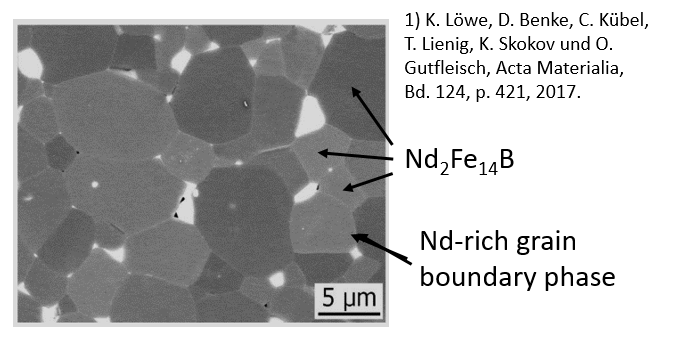Today, NdFeB is the magnetic material with the highest energy density available, which makes it highly demanded for many applications linked to new energies, electrical mobility and automation.
The outstanding properties of this material stem from two complementary aspects:
First, the intrinsic properties of the Nd2Fe14B phase are especially favorable to obtain a good permanent magnet:
- The Curie temperature is about 320°C
- Saturation magnetization is as high as 1.62T
- Magnetocrystalline anisotropy is about 7T for NdFeB, but ruses to 15T for DyFeB and 22T for TbFeB. Therefore, substitution of Nd by heavy rare earths is a way to simply increase coercivity at the expense of remanence.
Yet, it is a known fact that such good intrinsic properties are only a necessary, but not sufficient condition to obtain a magnet with satisfactory extrinsic properties. Over the past decades, the composition and the processing steps have been tailored to yield a particular microstructure in sintered NdFeB magnets, consisting in magnetic Nd2Fe14B grains surrounded by a thin but continuous Nd-rich grain-boundary phase layer. This grain boundary phase acts as a magnetic insulator between grains and favours magnetic hardness (high coercivity).
